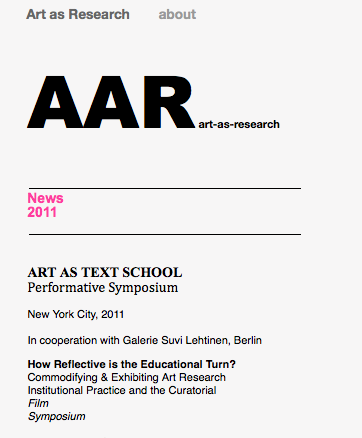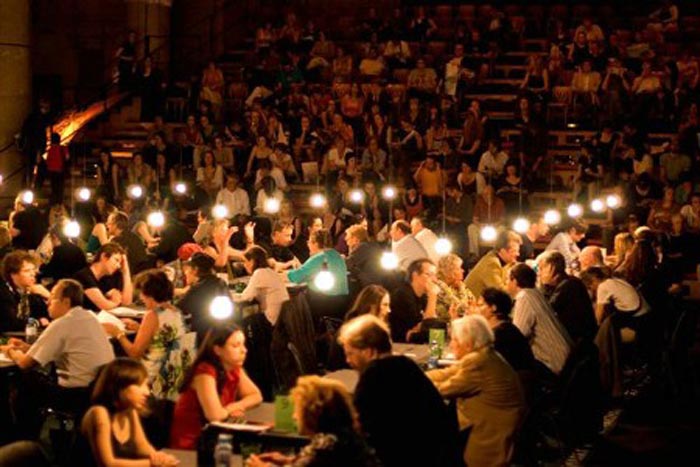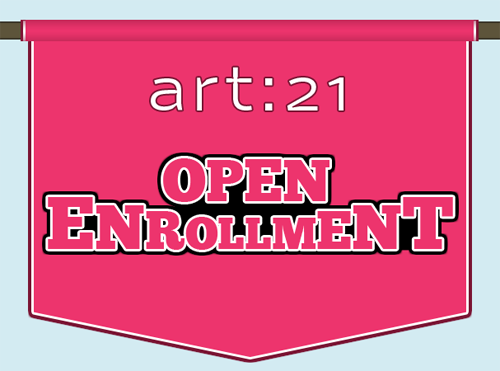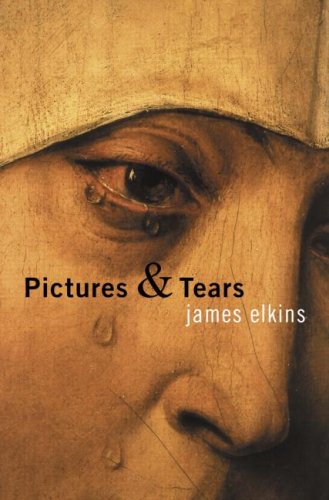I’ve never been able to get past the touchy-feely over-share of the title of James Elkins’s 2001 book Pictures and Tears: A History of People Who Have Cried in Front of Paintings. When I say, “get past,” I literally mean that I can’t walk past it in a bookstore without shuddering and losing appetite for art, my lunch, and the world. I’m British, and therefore have inherited Victorian attitudes on emotion in academia. I prefer art theory that pays greater homage to T.J. Clark than Oprah’s Book Club (and I love Oprah). That being said, I’m really looking forward to attending Art Speech: A Symposium on Symposia that Elkins is participating in this Friday and Saturday at MoMA. Billed as a public program that will deconstruct and critically reflect upon the very format that it takes as its mode of operation, the two-day event is right up my research alley. Organized by artist and MoMA Public Programs Director Pablo Helguera as an opportunity to “anatomize art historians’ and artists’ habits at the podium,” the symposium will include “reenactments of famous acts of criticism, critiques of the academic slide show, an investigation of the effects of apparently authoritative presentations, experiments in the effects of stage presence, and analyses of the academic introduction and of the performative.” I’m particularly interested in hearing from artist Carey Young, and intrigued about the public deconstruction of a video excerpt of a lecture given by said hero, T.J. Clark. If artists and, latterly, curators have taken “exhibitionality” as their medium, it’s about time the coalminer’s canary of the art world, the public program, got an opportunity for some navel gazing. MoMA’s focus on art speech coincides with the new value ascribed to art education as discursive practice in art, unsurprising given Helguera’s own practice as an artist.
Whether classroom teaching, itinerant program, or more outré encounter, the public presentation of ideas is indeed a performance, and the reflective act of presenting “programs” to an enthralled/frustrated/borderline angry mob audience (delete as appropriate) within the museum has been part of the artist’s arsenal since Andrea Fraser asked “May I Help You?” Recently, I sat down with Berlin-based artist Johanna Bruckner at her temporary home at Flux Factory in Queens to talk about her pipeline project Art as Research, which asks similar questions to Helguera’s This is not a Panel Discussion (2009) – itself an etymological twist on Tino Sehgal’s This is… series. Bruckner’s work occupies the liminal space between producing text research for a PhD in art practice (Elkins has written on that subject too!) and the desire to create, document, and archive her research in visual form through film and video. Currently working on a staged symposium to be performed in Stockholm later this year, her work is particularly invested in reflecting upon the socio-political context of knowledge production manifested by the ever-proliferating pedagogical arms of international art biennials. Put simply, her work questions what is achieved through parallel biennial programs of presentations, temporary libraries, and pop-up workshops. Is it further artistic product? What is the relationship between artist, curator, educator, and audience, and how can these relationships be reconfigured or reflected upon? Does art speech in this form have any hope of criticality, reflection, or truly democratic engagement of communities outside of contemporary art boundaries? Are these even the goals to which such education efforts ascribe?

Berlin-based emerging artist and researcher Johanna Bruckner's project calls into question the production of knowledge and presentation of "research" around contemporary art biennials.
Similar questions concerning the role of the audience were raised exactly a year ago, again at MoMA, with Audience Experiments: Contemporary Art in the Age of the Spectacle, where Fraser was the opening speaker. The public program was a reflection on current experimental performance practices in art and serves as MoMA’s precursor to Art Speech this week. The line-up for that event included, among others, RoseLee Goldberg, Hannah Hurtzig, and artist David Levine, and attempted to address not just the history of performance art and the practice and experience of the speakers, but the more abstract idea of the spectator and the very real attending audience. While the majority of the audience didn’t expect – and thoroughly enjoyed – Fraser’s Opening Welcome (2001), the format of the rest of the night didn’t swing too far from the usual dynamic of animated speakers on stage upon which many pairs of silent eyes were trained. Artforum wrote a great round up of the event so I won’t rehash it here, but my personal favorite was Hannah Hurtzig’s Warsaw Mobile Academy project, Blackmarket for Useful Knowledge and Non-Knowledge. Hurtzig’s format bucks the usual panel/audience relationship and instead offers a buyer’s market where attendees can bid and purchase (using various forms of “currency”) half-hour one-on-one time slots with the speakers of their choice, picking from up to 100 experts in their respective fields. Like Seghal’s “participatory” project This Situation (2007), Hurtzig brings together a collection of intellectuals to “perform knowledge.” Unlike Seghal, her project leaves room for the audience to direct its ebb and flow, with the spectators shedding the role of spectator and becoming invested in a choose-your-own-adventure style of public event.

Hannah Hurtzig, "Blackmarket for Useful Knowledge and Non-Knowledge." Arab-Jewish Center, Tel Aviv, Israel, 09/22/09.
Public programs or classroom lectures are an extension of the exhibition space or the institutional manifesto of the museum (“for the greater good”) in more ways than one. There is an ingrained passivity to the spoken presentation form that at best produces viewers-as-vessels and at worst is the most maddening spectator sport, a feeling Hurtzig’s alternative model addresses in part. I hope Elkins and the rest of the presenters can proverbially “bring it” to the symposium at MoMA this week and meaningfully reflect on – and facilitate the audience’s reflections on — the boundaries between spectators and panel. While I, too, have never cried at a painting, I’ve definitely cried tears of boredom, frustration, or just plain rage at many a museum public program. I’m looking forward to universally dry eyes in the house this Friday.






